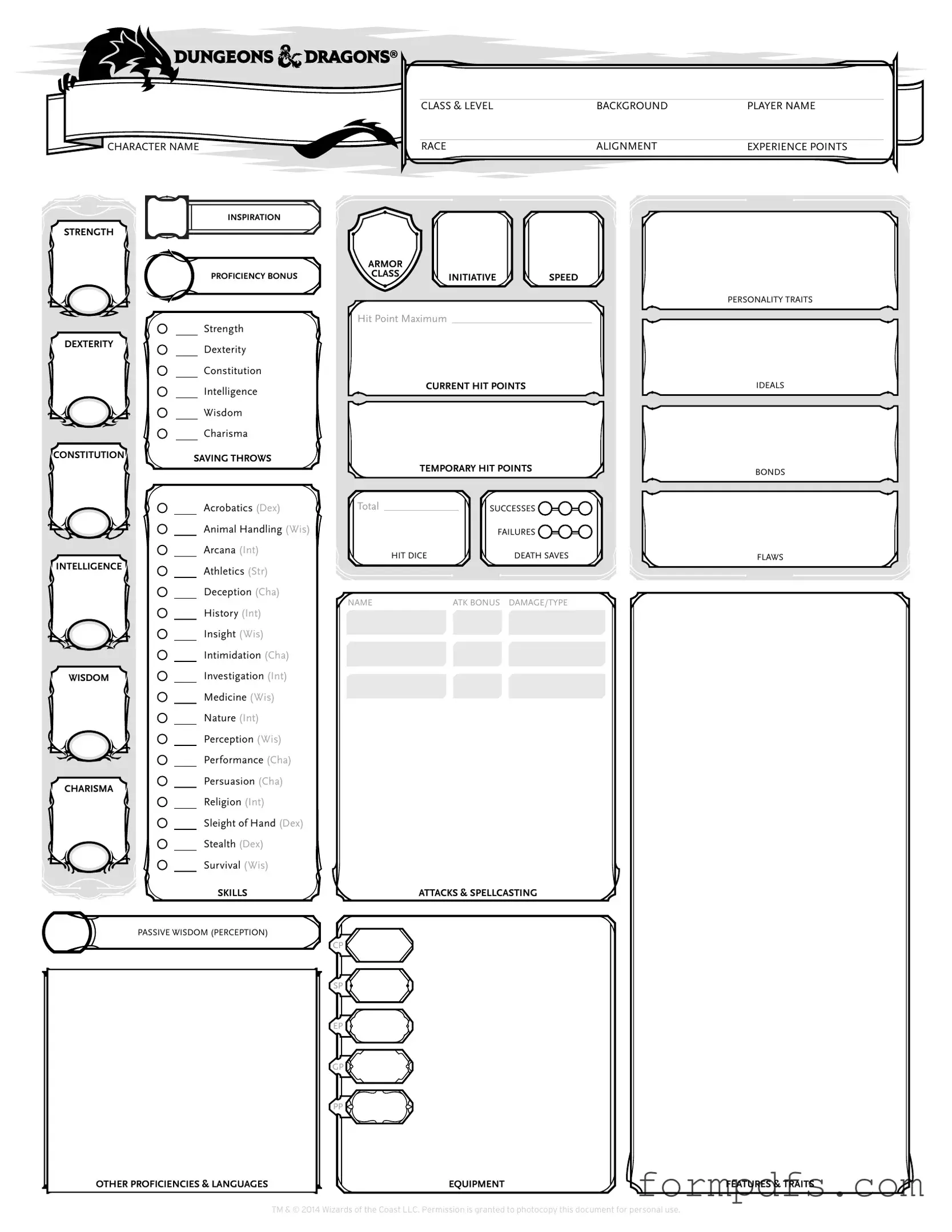What is a D&D Character Sheet?
A D&D Character Sheet is a tool used by players to track their character's abilities, skills, equipment, and other important details during gameplay. It serves as a comprehensive overview of your character, helping you manage their actions and decisions in the game world.
How do I fill out a D&D Character Sheet?
Filling out a D&D Character Sheet involves several steps. Start by selecting your character's race and class, as these will define their abilities and skills. Next, assign values to your character's attributes, such as strength and intelligence. Don’t forget to note down your character's background, equipment, and any spells they can cast. Take your time to ensure accuracy, as this sheet will guide your gameplay.
Where can I find a D&D Character Sheet?
You can find D&D Character Sheets online through various resources, including the official Dungeons & Dragons website. Many fan sites also offer printable versions. Additionally, some tabletop role-playing games provide digital tools that allow you to create and manage your character sheet electronically.
What are the main sections of a D&D Character Sheet?
A typical D&D Character Sheet includes several key sections: character name, race, class, abilities, skills, equipment, spells, and background. Each section is designed to capture different aspects of your character, from their physical capabilities to their personal history.
Can I customize my D&D Character Sheet?
Absolutely! Many players choose to customize their Character Sheets to better suit their play style or to reflect their character's unique traits. You can add notes, modify sections, or even create your own layout. Just make sure that all essential information is still clearly presented.
Do I need to update my D&D Character Sheet during gameplay?
Yes, it’s important to keep your D&D Character Sheet updated throughout the game. As your character gains experience, levels up, or acquires new items, you should reflect these changes on the sheet. This helps maintain an accurate representation of your character’s abilities and resources.
What if I make a mistake on my D&D Character Sheet?
Making mistakes is a normal part of the process. If you realize you've made an error, simply cross out the incorrect information and write the correct details next to it. If you’re using a digital sheet, you can easily edit the fields. Keeping your sheet accurate is essential for smooth gameplay.
Is there a difference between digital and paper D&D Character Sheets?
Yes, there are some differences. Digital Character Sheets often allow for easier updates and calculations, while paper sheets can provide a tactile experience that some players prefer. Both formats have their advantages, so choose the one that feels most comfortable for you.
Can I use a D&D Character Sheet for other tabletop RPGs?
While D&D Character Sheets are specifically designed for Dungeons & Dragons, some elements may be applicable to other tabletop RPGs. However, different games often have unique mechanics and requirements, so it’s best to use the character sheet specifically designed for the game you are playing.
